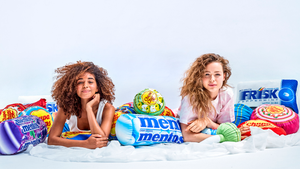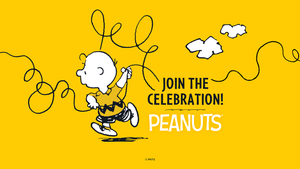Changing Channels
]> Is serving multiple tiers of distribution an effective strategy, and, if so, how to make it work? So you want to take your art-based brand to the mass market? L
April 6, 2018

]>
Is serving multiple tiers of distribution an effective strategy, and, if so, how to make it work?

So you want to take your art-based brand to the mass market? Looking for increased volume, more exposure, the possibility of landing larger purchase orders for existing licensees or perhaps luring more licensees to your brand portfolio? 
Wondering just what kind of wrath you'll incur from existing retail partners, such as the gift tier, the upstairs tier, the mid-tier, the independents, and other specialty stores?
Well, you're not the only one grappling with the notion. Sources at more than three of the top 10 art-based licensors admit the topic of expanding distribution is a daily office conversation, and one that can cause much consternation. However, some players say it's possible to serve many tiers simultaneously, and that it's the only way to stay alive.
License! culls the insight, anecdotes, and advice of some of the largest licensing entities in the art world to provide an overview of what's happening on the distribution frontier.

Target Market
Flavia, the art brand that jumped from $75 million in retail sales in 2000 to about $120 million today, broke into Target stores three years ago. After 30 years of gift store distribution, Flavia decided the time was right to expand into a new tier, and it chose Target as its retail champion. Licensee Carina International took the big plunge and landed an endcap in January 1999 that displayed Flavia frames and framed art.
"For about a year prior we had been mulling over whether or not we should go into Target," recalls Lisa Mansfield, president of Flavia, who classifies the Minneapolis-based upscale discount department chain as a mid-tier retailer. "We had to weigh our 30-year relationship with the gift tier against how dramatically the market had begun to change. At the end of the '90s, it was clear that in order to survive you had to have distribution in the mid-tier."
Flavia segmented artwork so the specialty/independent gift tier could have one set of images to call its own, and the mid-tier could have its separate collection of designs. Since then Flavia has added two more tier-specific looks: one for baby superstores and one for the mass market. 

Today about 40 percent of Flavia's licensed product is sold through the specialty/gift/mom and pop channels, 30 percent through the mid-tier, 20 percent through the mass market, and 10 percent through the direct-to-consumer channel.
Day-Timers, the time management and organizational solutions resource, and a Flavia licensee, distributes a variety of Flavia paper-based time-scheduling and organizational products to its direct channel (customers it reaches by catalog or Internet), the office superstore tier, the commercial channel (what corporations use for office needs), and the discount and drug store tiers.
The result for Day-Timers after two years of partnership with Flavia: The competition and overlap of product between channels is barely evident. For instance, Day-Timers says that because each channel is unique, and because the company tailors its product mix to each channel, the best-selling Flavia products in one tier are often discrete from those in another tier. In the mass channel, for instance, a wire-bound address book product leads the Flavia line, while at the office superstores, weekly and monthly calendars lead the Flavia pack.
It helps that Flavia product spans a broad target audience, according to Cindy Cluett, director of product management, Day-Timers. "Flavia is an outstanding partner for several reasons," she says. "One, the company reinvents itself and renews its looks to keep customers coming back. Two, it doesn't overuse any designs. Three, it tailors designs to specific retailers and distribution channels. Plus, it has its own relationship with retailers such as Target. And Flavia approaches us with product ideas and suggestions." Flavia is Day-Timers' only licensed-in property.
What's in a Name
Another approach is to incorporate different branding techniques for the different tiers. Tableware licensee Sakura sells folk artist Warren Kimble dinnerware at the mid-tier and the department store levels, labeled simply "Warren Kimble." But when Target wanted to carry dinnerware several years ago, Sakura, in conjunction with Kimble, developed a separate and distinctly new brand identity called "Brandon House by Warren Kimble."
Still appealing to the Kimble customer and true to the unique American Folk art style, the Target dinnerware used themes similar to product already in the department and mid-tier stores, but the patterns differed and the price points shifted. However, says Jeff Grinspan, vice president, director of licensing for Sakura, there have been no complaints from the upper retail tier.
The bottom line for retailers is sales, suggests Grinspan. "If retailers suffer from product being everywhere at once, naturally it's a bad thing. But if sales hold, everyone is happy."
Agents and licensors have come to some peace with the idea of stretching beyond the upstairs market, particularly if shoppers can't easily compare the offerings at one tier to those of another tier.
"We have been careful to dedicate specific art by channel to preserve a special look for better stores and independents," explains Shannon Goodwin, vice president of Courtney Davis, Warren Kimble's licensing agency. "This, in turn, benefits the nationals as they have unique programs. We have not had any negative reactions to this process."
Goodwin makes it clear Target is the last stop in its distribution strategy, that it intends to go no lower, and adds, "the savvy fashion-conscious Target customer makes Target an anomaly that withstands criticism."
There's a great degree of truth in that, as evidenced by Flavia's classification of Target as a mid-tier operation. However, global dominator Wal-Mart also has tremendous appeal for some art brands. Mary Engelbreit Studios chose the world's most powerful mass retailer as the venue to make its first big foray into the channel, via its fabric licensee, Cranston.
Although Engelbreit-branded product has been in the mass channels for years via greeting cards, calendars, and books, its conscious decision to direct the brand into "more channels of distribution has slowly evolved over the last three years," says Claudia Reed, director of marketing, Mary Engelbreit Studios.
After analyzing the opportunity to sell fabric in Wal-Mart, Reed says her firm realized several things: Wal-Mart is where the Mary Engelbreit customer shops for fabric; fabric is an "unfinished good," which, as a category, is perfect for Wal-Mart; and fabric in Wal-Mart in no way competes with the gift industry or the quilting market (which receive their own MES-designed fabric from Cranston). Perhaps most interesting, in terms of protecting the gift and upstairs tiers, Reed points out that Wal-Mart's fabric department is located in the back of the store, "so unless you knew Mary Engelbreit fabric was there, or you were shopping specifically for fabric, our brand was not exposed."
What was the reaction from the gift and quilting tiers? "[It] elicited not a single complaint," Reed says. "Most licensees understand the logic. Over the years, we've begun to work with larger licensees that are adept at transcending a variety of channels, so this cuts down on the conflicts."
As for Cranston, in a short time, it became the sixth largest contributor of Mary Engelbreit's 40 licensees, which, all together, create a total presence of $110 million in retail sales of licensed goods.
"In the past, the mass market was considered the proverbial last port for a licensed product, it was a sellout; it was thought that a sale at Wal-Mart essentially was taking away a sale from the independent or gift tier," says Eric Kuskey, a partner with Creative Brands, the agency that represents "painter of light" artist Thomas Kinkade. "Today the thinking has changed dramatically. You cannot ignore Wal-Mart as a force to be reckoned with, not with 2,800 stores."
Unlike other artists' works, Kinkade's paintings in mall-based galleries fetch thousands of dollars each. Despite this upper-end profile, licensing agent Kuskey sees the value of Wal-Mart as a distributor of affordable licensed Kinkade product.
Back in '98, Daydream (now dba At-A-Glance, a division of Mead, but no longer a Kinkade licensee) was the first to branch Thomas Kinkade's licensed product presence beyond the gift tier with a 12-month test of a calendar at Sam's Club.
Similar to the Sakura/Warren Kimble mass-market strategy, Daydream changed the name of the calendar product from "Thomas Kinkade, Painter of Light" (as it was known in the gift tier) to "Inspirations of Light by Thomas Kinkade." The licensee also recropped the images, and added religious verse for the Sam's sku. This time, there were complaints, but for astonishing reasons from unexpected sources. "The galleries called to complain that they didn't have the Sam's Club version of the calendar," Kuskey remembers.
The Bright Side
Some licensors and agents suggest going to the mass actually can benefit higher tiers. Says Debbie Mumm: "Some concerns were expressed by our licensees when we first went into Target with dinnerware, but time has proven that not only was Target the appropriate channel for that product, but exposure in that channel benefited the brand. Since then, interest in department and specialty stores increased, and those channels began to feature our housewares products, as well."
Jennifer Zolan, agent for Americana painter Donald Zolan, concurs. A great amount of Donald Zolan-inspired product is marketed directly to consumers via licensee The Danbury Mint, and the husband-and-wife art team welcomes the added exposure a powerhouse such as Wal-Mart can offer.
Licensees also can benefit, suggests Carter Rennerfeldt, partner, Challis & Roos. "Since our initial foray into more mass levels of retail, I have seen a number of our specialty licensees develop divisions to sell specifically to these accounts. Retail is such a dynamic landscape these days that it is important to cover all of one's bases. As long as a property's branding is established and protected in specialty tiers-and not used in mass tiers-it is possible to work concurrently in both channels."
Artist Andrea Mistretta, known best for her holiday themed images, suggests that an artist's distinct look and a strategy for being selective about product categories eases multiple tier distribution. "I've been told that what I have is desirable because it is different, and because my style is so labor intensive and hand-wrought, it's difficult to recreate. And even though my artwork has been seen in the mass, it's not like it's everywhere."
Mistretta, who works with 14 licensees, has been in mass with gift bags and boxes from Lindy Bowman, on QVC with giftware from Possible Dream, and in Fortunoff with collectibles via Kurt Adler. Plus, she debuted product at the mass level and then rose higher, a feat considered nearly impossible in the merchandising world.
Lastly, there are a few artists who were multi-tiered in approach and strategy from the start, including Debra Jordan Bryan, whose licensees such as Crown Craft, San Francisco Music Box Company, Roman, and Giftco cover the high-end, specialty, mass, and fundraising tiers with channel-specific product.
Despite relative channel harmony, occasionally, sources confirm, the product that ships to the upstairs, gift, and specialty tiers changes very little when it heads to mass. Sometimes, the identical product goes into multiple channels at the same time. For example, there is one leading puzzle maker that, when working with one leading art licensor, ships both the gift and mass tiers the exact same product.
So what's the lesson? "Certain product for certain tiers," as Creative Brands' Kuskey suggests, seems to be the safest route for now. Perhaps ultimately There Will Be Only One tier. But that's a futurist retail story for another time.
You May Also Like






